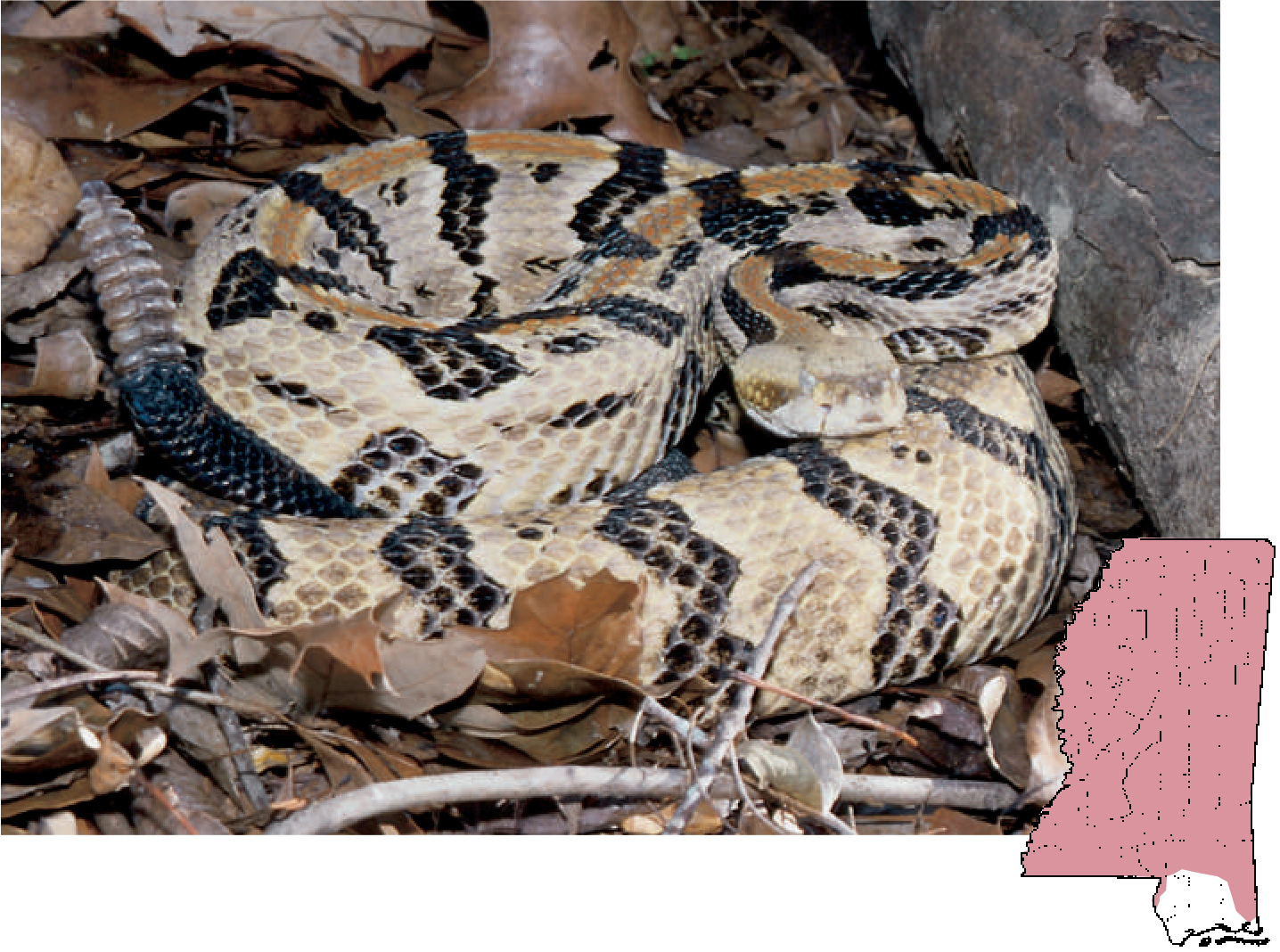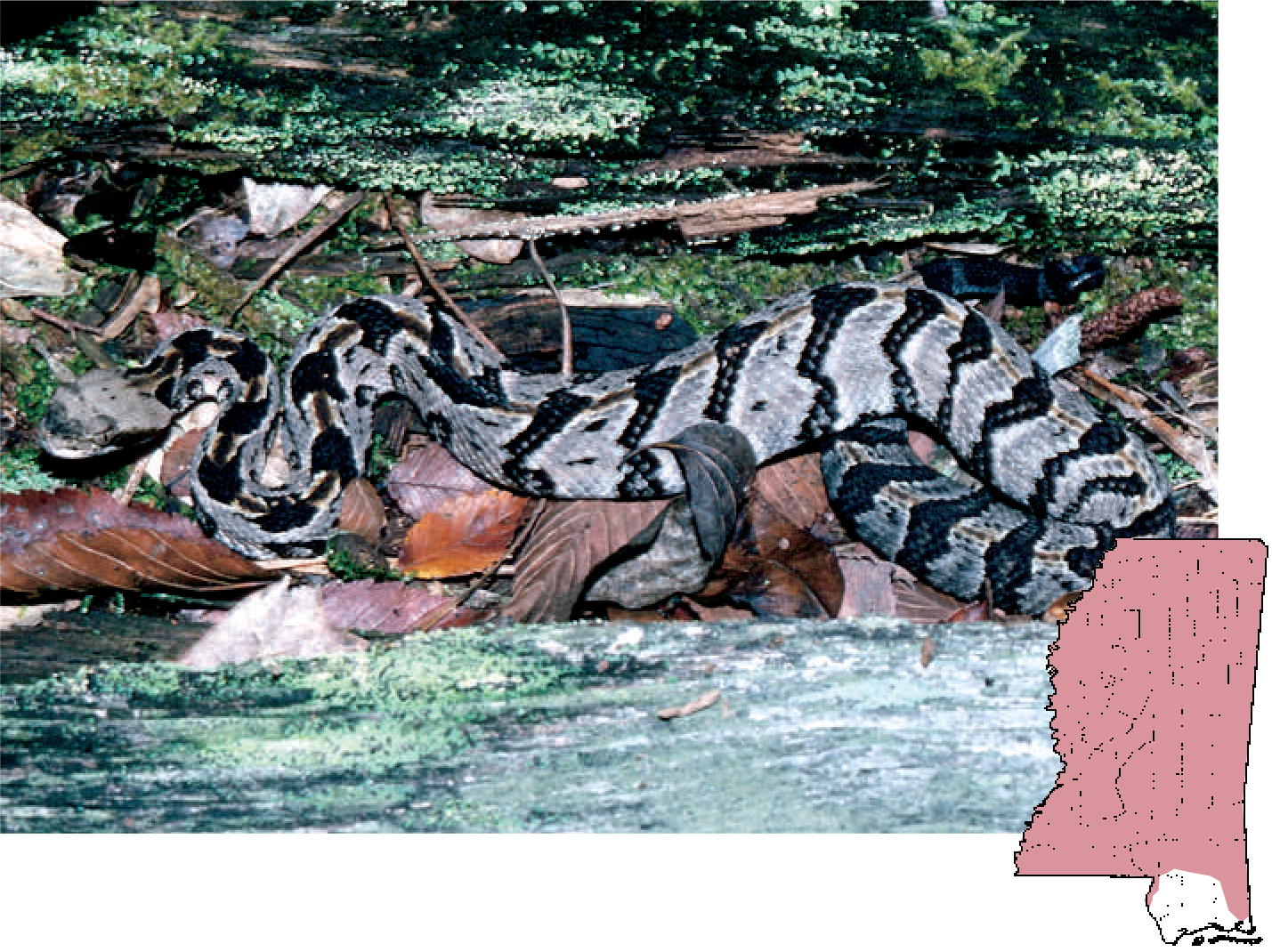




The average length is 3 to 4 1/2 feet. Ground color is gray to tan, often with a distinct pinkish wash. Wavy black bands cross the body. Overall coloration grows darker toward the tail. The tail is velvet-black. A single dark stripe runs back from each eye. A narrow rusty-red line follows the spine down the length of the snake. There is a prominent rattle on tail.
In Mississippi these snakes are almost exclusively referred to as “timber rattlers.” To a lesser extent the names “velvet-tailed rattler” and “diamondback” are used for this animal. Interestingly, the animal does not have diamond-shaped markings nor any real resemblance to the much larger eastern diamondback rattlesnake. In comparison, the canebrake rattlesnake is more slender with a proportionately smaller head than the eastern diamondback.
Canebrake rattlesnakes inhabit forest and river bottoms throughout the state, save the immediate Gulf Coast. Unfortunately, they have been exterminated over much of their historic range and their numbers continue to decline at an alarming rate. The female canebrake rattlesnake produces about a dozen live young only once every third year, resulting in a very low reproductive rate. Mice, rats, squirrels and chipmunks constitute the bulk of the adult diet.
As rattlesnakes go, the canebrake rattlesnake is calm and often slow to defend itself. Wild individuals rarely rattle at a human’s approach. Rather, they remain motionless and silent, or opt for a hasty retreat. In Mississippi the majority of bites of humans by canebrake rattlesnakes result from the person’s attacking the snake or otherwise trying to handle it.
Of the 55 different kinds of snakes in Mississippi, only six are venomous. Harmless snakes are more common, but encounters with venomous snakes do occur. As a resident of Mississippi, it is important that you learn to identify the species of…